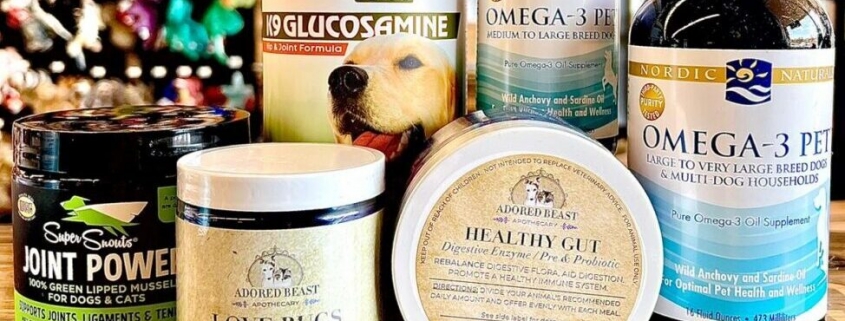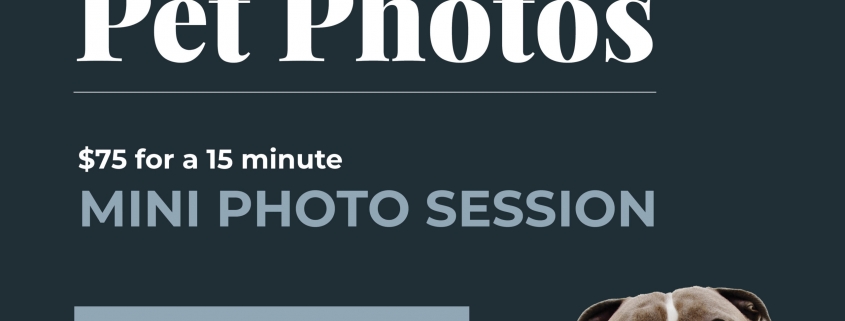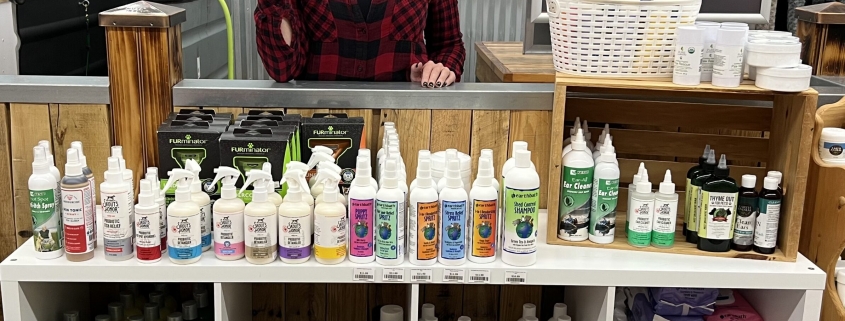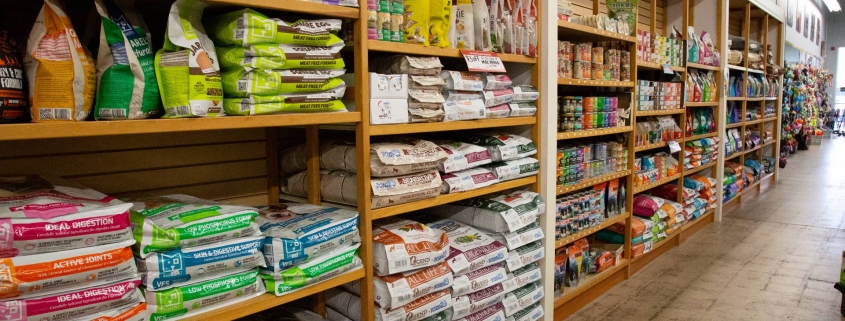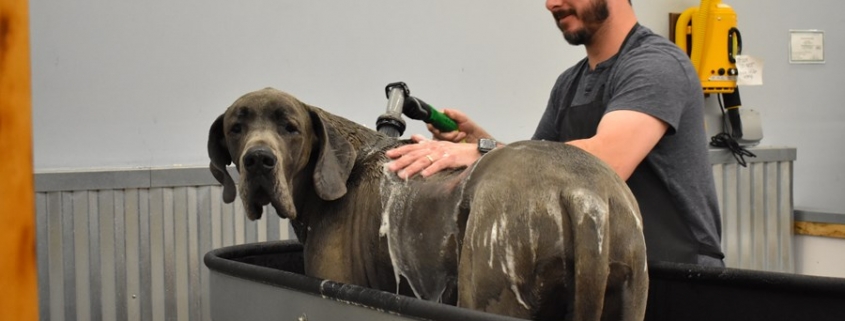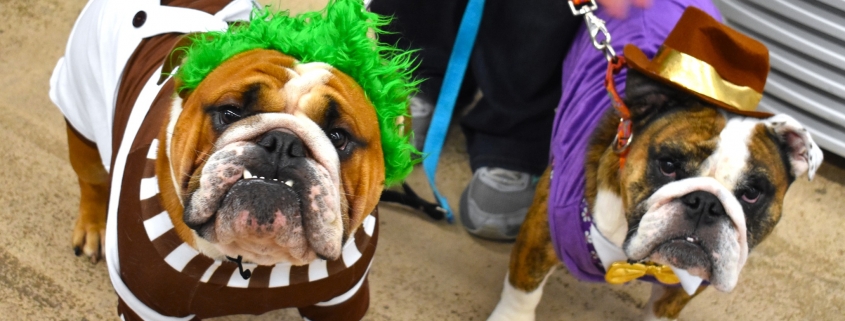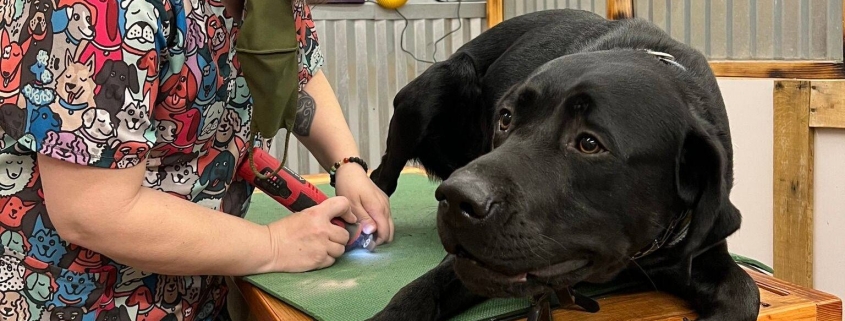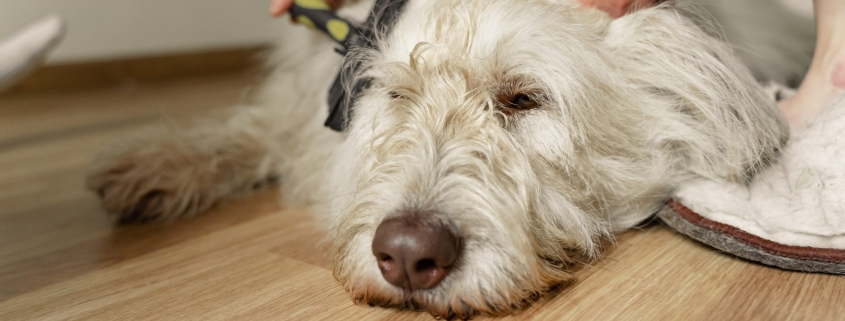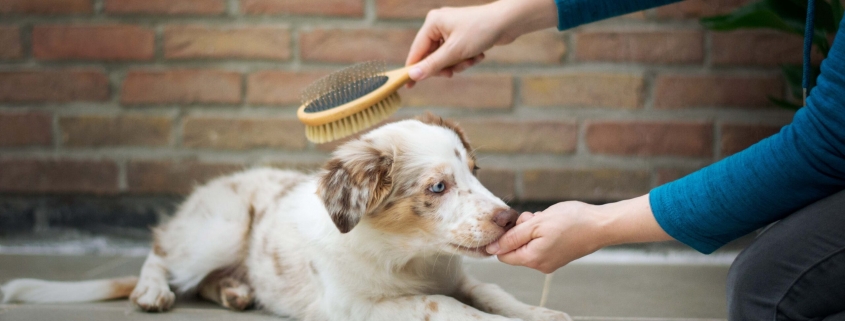Which One is Best for Your Pet?
Your dog’s skin and coat condition are excellent indicators of overall health. A healthy coat is a shiny, smooth coat without coarse or brittle hair. And healthy skin should be supple, not flaky or greasy.
While nutrition influences the health of your pet’s skin and coat from the inside, regular grooming and bathing do wonders to keep your dog’s skin and coat vibrant and healthy.
We believe that bathing your dog should be included in your overall grooming process. Bathing promotes skin exfoliation, removes loose hair, prevents matting, and lets you check for external parasites like fleas and ticks.
Perhaps most importantly, bath time is another opportunity to bond with your dog. Warm water, soothing shampoo, and soft and repeated touching allow you and your dog to strengthen your connection to each other.
Before we take a look at shampoos, let’s talk about your dog’s skin.
Canine skin is not like human skin
A dog’s skin is thinner and more sensitive than human skin. The epidermis (the outer layer of skin) is our body’s shield against the environment. We are protected from disease, ultraviolet light, and injury by it. This “shield” is 10-15 cells thick in humans. In dogs, it’s only 3-5 cells thick.
Hair that grows out of the skin is also different between the two species. Human hair grows as a single hair and continues to grow. A dog’s hair grows in bundles and stops growing at a certain length, as determined by the dog’s genetics. Once the hair stops growing, it dies and is shed.
These differences are why you can’t use human shampoos on your dog. In most cases, the pH is too acidic for your dog’s skin and will cause irritation and rashes.
How do you pick the right shampoo?
Like shampoos for human hair, there are many choices when picking the right shampoo for your pup.
We separate dog shampoos into nine main categories:
- Probiotic Shampoo
- Deodorizing Shampoo
Let’s take a closer look at each type of shampoo.
General Purpose Shampoo
These are less expensive “maintenance” shampoos that gently clean your dog if she has no allergies or skin conditions. Our favorite general-purpose shampoos include Kenic Kalaya Emu Oil Shampoo.
Coat Conditioner
Conditioners are used after shampooing to detangle and condition your dog’s coat. Most coat conditioners contain silicones that bond to the hair’s surface, creating a protective envelope. This temporarily creates a smooth surface, even after the conditioner is rinsed out. We recommend EarthBath Oatmeal and Aloe Conditioner.
Conditioning Shampoo
A conditioning shampoo is the ultimate two-in-one product if you want to gently clean and condition simultaneously. We haven’t found these two-in-ones to be as effective as a dedicated conditioner, but they are perfect for maintenance bathing. We like Skout’s Honor 2-in-1 Shampoo + Conditioner.
Puppy Shampoo
While your adult dog’s skin is sensitive, a young puppy’s skin is even more so. We recommend using only a washcloth and warm water to clean your puppy until she is three months old. She can be introduced to bathtime at that age, using a shampoo specially formulated for a pup’s soft fur and delicate skin. Quality puppy shampoos use all-natural ingredients and should be tear-free to reduce irritation. Our recommended puppy shampoos are EarthBath Puppy and Skout’s Honor Happy Puppy Shampoo.
Hypo-Allergenic Shampoo
Hypo-allergenic shampoos are for dogs with extra sensitive skin or those prone to scratching. These shampoos are typically free of the fragrances, dyes, and coloring that can cause allergic reactions. Our top hypo-allergenic shampoos are Kenic Emu Oil Shampoo and EarthBath Hypoallergenic.
Oatmeal Shampoo
Oatmeal shampoos are designed for dogs who suffer from occasional hot spots or seasonally dry, flaky, and itchy skin. These shampoos are made with a finely ground mixture of oatmeal that acts as a mild exfoliant when lathered into the coat, loosening dead skin cells and temporarily relieving itching. Our top-selling oatmeal shampoo is EarthBath Oatmeal and Aloe.
Medicated Shampoo
Medicated shampoos target specific skin and coat conditions such as hot spots, fungal and bacterial infections, and parasites like fleas and ticks. Often, these conditions require medical treatment in addition to specialized shampoo. Our best-sellers are Kenic Tea Tree Shampoo and EarthBath Hot Spot Relief Shampoo.
Probiotic Shampoo
Often referred to as “good bacteria,” probiotics are live bacteria that help resolve many skin-related issues in your dog. We frequently recommend probiotic shampoos to relieve itchy skin, dry hair, hot spots, and seasonal allergies. Our favorite probiotic shampoo is Skout’s Honor Probiotic Honeysuckle Pet Shampoo + Conditioner.
Deodorizing Shampoo
This type of specialty shampoo works on the molecular level to break down odors at the source instead of masking them with fragrance. We’ve found it’s a wise investment to always keep a bottle on hand. You never know when Fido will get in an argument with a skunk or decide to roll around on a fresh pile of feces or dead animals. Our most effective deodorizing shampoos are EarthBath Deodorizing shampoo.
Picking the Right Shampoo for Your Dog
Your dog’s skin and coat are windows into her health. Using a high-quality dog shampoo keeps her coat clean, moisturized, and healthy.
Regular bathing — once a month is fine for most dogs — prevents matting and removes dead hair and skin. Bathtime is also the perfect opportunity to look for scabs, hot spots, bald spots, or parasites.
Please feel free to call us at (203) 271-0111 or stop in the store and let us help you pick the shampoo or conditioner that’s best for your dog.

